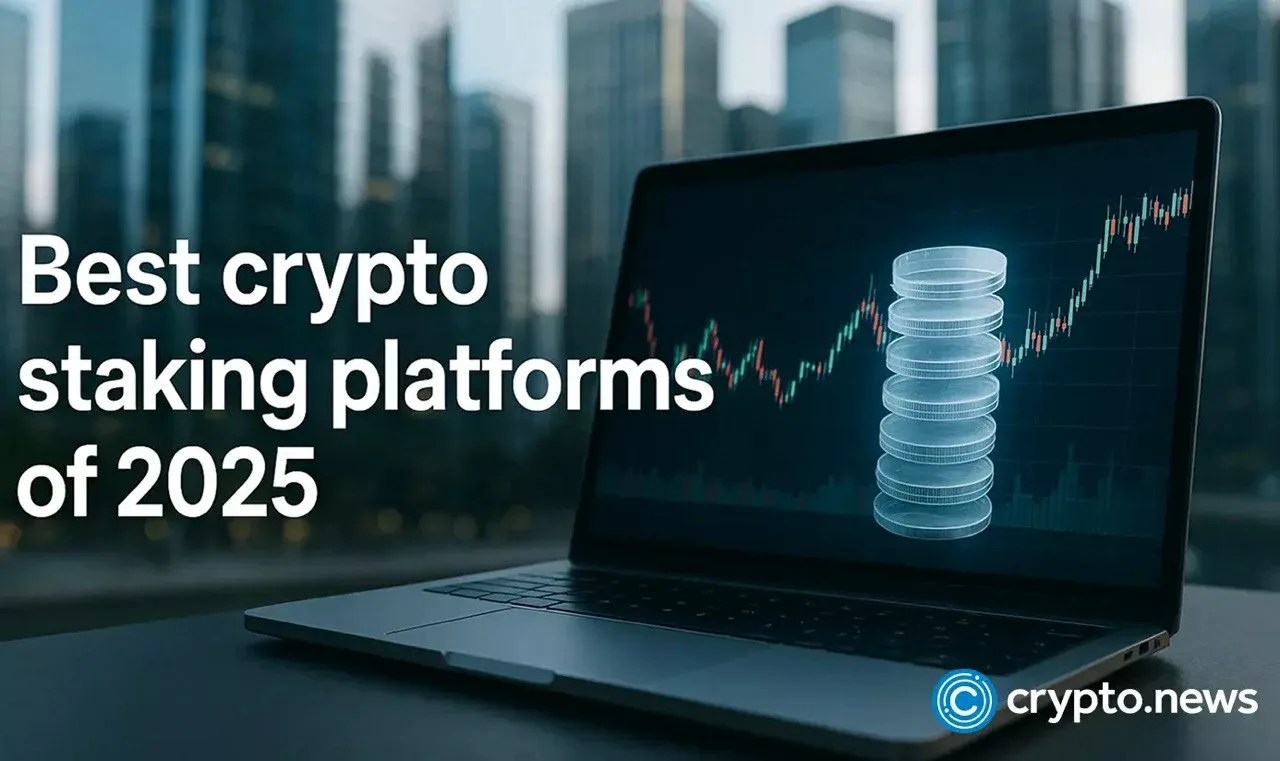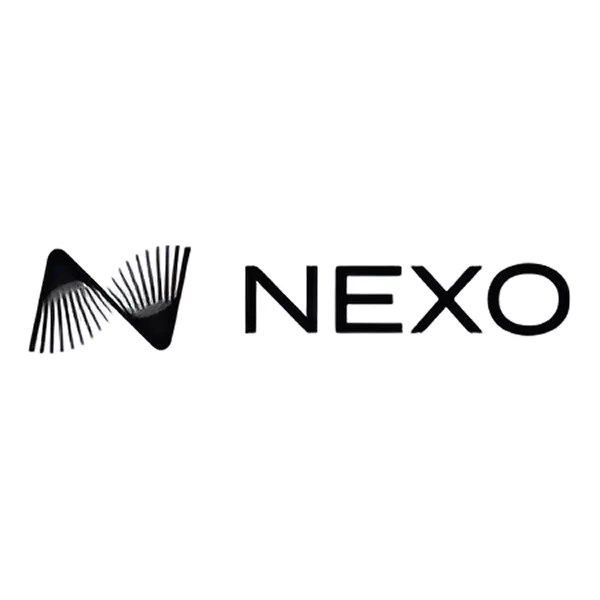Best crypto staking platforms for December 2025

In 2025 the world of crypto staking is evolving fast. What once was simply “lock up your coins and earn yield” is now a more sophisticated ecosystem: liquid staking tokens let you keep liquidity while staking, restaking enables you to reuse staked assets for further yield, and staking‑as‑a‑service providers allow non‑technical users to participate in validator staking without running nodes.
As inflation rates on major proof‑of‑stake networks have moderated, and regulatory scrutiny has increased, many platforms now emphasise security, flexibility and composability (being able to use your staked tokens in DeFi). Below we look at the best crypto staking platforms 2025 — how they work, what they support, the reward potential, and what to watch out for.
What are the best platforms for crypto staking in 2025?
Cryptocurrency staking platforms come in many shapes and sizes. Here are our top picks for the leading staking platforms for crypto in 2025.

Review
Highlights: Extremely wide asset variety, frequent promotional deals, broad staking market reach.
Things to watch: Regional licensing/availability differences (some jurisdictions restrict Binance), rate fluctuations, asset liquidity risk, the potential for hidden terms in locked promotions.

Review
Highlights: User-friendly app, frequent promotions (e.g., extra APR for SOL/ETH in US/CA markets) and expanding token support.
Things to watch: Rates and eligible assets can change; service-fee deductions apply; availability depends on your country/region; always check the unstaking terms and campaign conditions.

Review
Highlights: Large asset variety (including many lesser-known PoS tokens), frequent campaigns and staking-earn opportunities beyond major coins.
Things to watch: Higher yields often correlate with higher risk (e.g., smaller networks, lower liquidity, newer tokens); regulatory/licensing status is less clear in some regions (e.g., U.S./UK); past security incidents should remind users to check platform protections and asset segregation.

Review
Highlights: Regulated institution (operating as a New York Trust Company for U.S. oversight) with a strong focus on security and compliance.
Things to watch: Gemini previously faced regulatory scrutiny over its “Earn” program; while staking is a separate service, users should always review current terms and conditions.

Review
Highlights: Strong reputation for security and transparency, with clear commission tables and published reward ranges.Longstanding track record as one of the more trusted exchanges in the industry.
Things to watch:
- Kraken takes a commission on staking rewards that varies by asset and region, so the listed APRs are before fees.
- In 2023, Kraken halted its US on-chain staking service following a regulatory settlement but relaunched it in 2025 for select states and territories. Staking availability and conditions still depend on the user’s region.
*Not investment advice. Crypto trading involves risk of loss. Payward Europe Solutions Limited t/a Kraken is authorised by the Central Bank of Ireland.

Review
Highlights: Very beginner-friendly interface, broad asset support, strong regulatory footprint.
Things to watch: Higher fees (Coinbase takes a significant commission on staking rewards compared with non-custodial or direct staking). Also, staking-availability, terms, and unstaking wait-periods vary by jurisdiction. Always check the specific terms for your country.

Review
Highlights: High flexibility: users can both earn rewards and borrow/spend crypto using the same platform. Loyalty programmes and payout in NEXO tokens can boost yields.
Things to watch:
- Platform availability varies by jurisdiction — e.g., U.S. and U.K. users face restrictions or altered terms.
- Many “earn” programmes depend on conditions such as minimum balance, loyalty‑tier, payout in NEXO tokens, or fixed‑term lock‑ups — so “up to” figures may not reflect typical baseline yields.

Review
Highlights: Excellent option if you want to keep liquidity while staking; you can use your staked assets elsewhere (e.g., in lending, trading, or liquidity pools).
Things to watch: Derivative tokens carry additional risks — smart-contract risk, validator/slashing risk, protocol and governance risk; yields are typically lower than very high-yield locked alt-staking opportunities; and the value of the derivative token may fluctuate relative to the underlying asset.

Review
Highlights: Some users appreciate the ease of use and promotional yields; flexible staking is offered for certain assets.
Things to watch: Mixed user reviews (including on Trustpilot) raise concerns about customer service, withdrawals and platform reliability. A business sale in 2025 has also affected service availability for certain jurisdictions. Higher yield opportunities correspond with higher risk — do your due diligence.

Review
Highlights: Low entry barrier (e.g., a 2.4 ETH bond for the first validator in a specific plan), monthly subscription fee rather than large lock-up, good option for semi-technical users wanting more control than a standard exchange.
Things to watch: Requires some technical knowledge or at least comfort with validator workflows; a subscription/maintenance fee applies; fewer users than major exchanges, so platform liquidity, support and terms should be reviewed carefully.
Top 10 crypto staking platforms 2025: Comparison table
| Platform | Cryptos available | *Maximum reward rate | Type | Additional benefits |
| Binance | 60+ assets (ETH, SOL, ADA, DOT, altcoins – varies by region) | Up to very high in locked promos (ETH ~ 7%) | Custodial | Huge asset variety, flexible + locked staking, frequent promotions, DeFi-staking bridge options |
| Coinbase | ETH, SOL, ADA, XTZ etc., varies by region) | Up to ~14 % for selected assets | Custodial | Beginner-friendly, strong compliance footprint, no node operation required |
| Crypto.com | 30+ tokens (ETH, SOL, DOT etc.) + campaigns | Up to ~15 % in promotions | Custodial (app / web) | Mobile-first, flexible + locked terms, frequent promotional APR boosts |
| KuCoin | Dozens of altcoins | Depends on term, lock-up, and asset | Custodial | Large selection including smaller PoS coins, frequent campaigns, flexible + locked options |
| Kraken | ETH, SOL, ATOM, DOT, XTZ + others | Up to ~22 % (ATOM bonded) | Custodial | Flexible and bonded staking; transparent fees; strong security reputation |
| Gemini | ETH, SOL (vary by region; not US) | Up to ~6 % (SOL EU rollout) | Custodial | Regulated (NY Trust Co.), security-first focus, simple setup |
| Nexo | Broad selection (ETH, SOL etc.) within earn/lend ecosystem | Up to ~16 % (depends on tier & payout) | Hybrid (custodial staking + lending) | Earn, borrow & spend in one app; loyalty tiers boost rewards |
| Lido | ETH, MATIC, SOL + others via liquid tokens | ~5 % (ETH avg.) | Non-custodial / Liquid | Retain liquidity (stETH etc.); usable in DeFi; leading liquid-staking provider |
| Bake | ETH, MATIC, DOT, SOL, ATOM, NEAR + more | Variable (high promos >10 %) | Custodial | Easy UI, flexible options, promotional yields; note mixed reviews & regional restrictions |
| Stakely | ETH, MATIC, DOT & more (30+ networks) | ~7 % (ETH Simple CSM) | Non-custodial (staking-as-a-service) | Low entry barrier (2.4 ETH min), subscription model, user retains control |
*Maximum reward rate = approximate upper-end figure publicly listed or achievable in 2025 campaigns; actual yields vary by region, asset, and term.
How to choose the best platform to stake crypto?
When evaluating staking platforms in 2025, consider the following factors:
- Supported assets – Do you want to stake ETH, SOL, ADA, DOT, or smaller altcoins? The platform must support your coin.
- Yield / APY – Higher yield is attractive but often carries higher risk (altcoins, locked terms, smaller platforms). On major networks like ETH the yield is now modest (3‑6% range).
- Lock‑up / unbonding terms – Flexible (you can stake/unstake at any time) vs bonded/locked (higher yield but funds tied up). Make sure you understand unbonding periods.
- Type of staking – Custodial (you hand over control) vs non‑custodial / liquid staking (you keep a token, use it elsewhere) vs service model (you delegate but retain control).
- Regulation & security – Platform should have strong security practices (cold storage, MFA, audits) and if custodial, preferably regulated. Example: Gemini emphasises being a NY trust.
- Fees & reward‑sharing – Some platforms take large cuts of staking rewards. For example, custodial platforms may deduct service fees.
- Composability / DeFi usage – If you stake via liquid staking (e.g., stETH) you can still use that token elsewhere in DeFi and earn extra yield.
- Jurisdiction / availability – Some platforms restrict staking services in certain countries/states due to regulation. Always check whether you’re eligible in your location (e.g., Ukraine, EU).
- Risk profile – Altcoins, smaller networks, or new platforms may offer big yields but come with increased risk: network instability, slashing risk, platform insolvency.
- Purpose & strategy – Are you staking simply for yield, or also to support decentralization, participate in governance, or use the staked token in DeFi? Your objective will influence platform choice.
Where is the best place to stake crypto in 2025?
Nobody can tell you what the one best place to stake crypto in 2025 is. Your decision depends on a number of factors, like exactly what you’re looking for in terms of rewards, your risk appetite, the assets you want to stake, and the legal jurisdiction where you reside.
The best thing to do is to look into each of the major staking platforms until you find one that’s right for you! That’s if you find one that’s right for you, of course.
One point that should be made very clear is that staking is not without risk, and we’ll explore that risk in more detail in the next section.
What are the risks of staking crypto?
The main risk of staking crypto is, arguably, the volatility of crypto assets. When staking assets like ETH or ADA, you’re typically hoping to make a profit from the rewards, and while some users do indeed achieve this, others fall afoul of crypto market crashes and end up losing money rather than earning it.
This is especially true for bonded staking, where users lock assets away for a fixed amount of time.
Of course, even staking stablecoins, crypto assets designed to remain stable in value, is risky. First of all, stablecoins can and do fluctuate in value and even collapse entirely, although such events are quite rare. The TerraUSD stablecoin depegged and lost around 99% of its value in 2022, resulting in around $40 billion worth of investor assets lost from the ecosystem.
Staking also requires that users put their trust in the staking platform they’re using.
Decentralized projects are vulnerable to smart contract exploits or perhaps being more centralized than advertised, whereas centralized projects are famously vulnerable to hacking and theft.
Risks are, of course, present in traditional finance, and this section is not intended to put you off the idea of staking entirely but simply to be responsible and informed when entering the cryptocurrency markets.
FAQ
What is crypto staking?
Crypto staking simply refers to holding crypto assets over time in order to receive rewards. However, while the concept is similar, there are many different types of staking.
For example, Ethereum users can stake ETH in order to validate transactions on the Ethereum network. This allows the network to continue operating while incentivizing users in the process.
What is the best way to stake crypto?
The best way to stake crypto depends on your preferred assets, APYs, and risk appetite, as well as the legal jurisdiction where you live.
Are crypto staking platforms safe?
Crypto safety is a complex issue, and the prevailing sentiment has gotten it wrong multiple times in recent years, such as with the FTX exchange, which was widely trusted even in mainstream finance. People seeking to invest in or use crypto products would do well to thoroughly research the safety of a crypto platform themselves before using it, paying attention to regulatory compliance as well as the reputation and track record of the project and its staff.
Disclosure: This article does not represent investment advice. The content and materials featured on this page are for educational purposes only.














